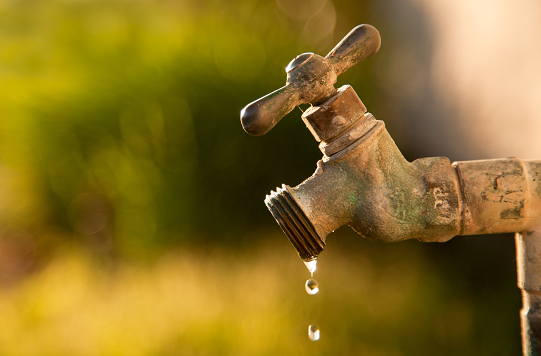
TUTORS NOTE
– OPEN the tutor guide URL in the pinned message.
– Follow the instructions in the tutor guide.
– Follow the instructions in the tutor guide.

Today’s GOALS
Let’s check today’s goal. This unit is a review of SDGs lessons.
Today’s Goals
■ Be able to think of international issues as our individual matters
■ Be able to state your opinions and ideal activities about the SDGs for solving the problems
Part A Self-Introduction

Part A_1 Self-Introduction
Let’s introduce ourselves to each other.
My name is ________. What is your name?
Part A_2 Self-Introduction
I am ________. Nice to meet you.


Part A_3 Self-Introduction
Nice to meet you too, ________. Let’s get started.
Part B Vocabulary
Review the vocabulary and phrases related to the topics

Part B_1 Vocabulary
We’ll read aloud the words and sample sentences below. Please repeat after me. I will check your pronunciation.
Part B_2 Vocabulary
 |
suffer 被る、苦しむ
Climate change leads to extreme weather, causing people to suffer from natural disasters.
|
 |
shortage 不足
There is a shortage of clean water in some areas, making it difficult for people to drink.
|
 |
emission 排出物、排出
High levels of emissions from cars and factories contribute to air pollution.
|
 |
combustible 可燃性の
Combustible energy emits gases that are harmful to the body.
|
 |
consumption 消費
Limiting water consumption by taking shorter showers helps conserve this precious resource.
|
 |
efficiency 効率
Turning off lights when not in use is a simple way to improve energy efficiency.
|


TUTORS NOTE
– OPEN the tutor guide URL in the pinned message.
– Follow the instructions from [PART B_3] to [PART B_5] in the tutor guide.
– Follow the instructions from [PART B_3] to [PART B_5] in the tutor guide.

Part B_3 Vocabulary
Next, please construct sentences using each word below.
Part B_4 Vocabulary
| suffer | |
| shortage | |
| emission | |
| combustible | |
| consumption | |
| efficiency |


Part B_5 Vocabulary
Great! Now, let’s review your answers.
Part B_6 Vocabulary

Part C Reading
Review the facts about the topics and the countries that are related to the SDGs

Part C_1 Reading
Please read aloud the passage below.
Part C_2 Reading

Global Hunger
According to current estimates, about 9 percent of the global population is suffering from hunger. Immediate action is required to give food and humanitarian assistance to the most vulnerable places.
Also, agricultural productivity and long-term food production must be increased in order to help reduce the dangers of hunger. However, for example, Bangladesh’s agriculture system is still outdated and unscientific because of irrigation and water shortages. They are required to make consistent progress in terms of food production.


Part C_3 Reading
| 1. | According to the passage, what percentage of the world’s population is suffering from hunger? |
Part C_4 Reading
| Answer: |


Part C_5 Reading
| 2. | Why are people in Bangladesh required to make consistent progress in terms of food production? |
Part C_6 Reading
| Answer: |


TUTORS NOTE
– OPEN the tutor guide URL in the pinned message.
– Follow the instructions in [PART C_7] in the tutor guide.
– Follow the instructions in [PART C_7] in the tutor guide.

Part C_7 Reading
Great job answering! Now, let’s review your answers.

Part C_8 Reading
Please read aloud the passage below.
Part C_9 Reading

Affordable and Clean Energy
People’s well-being is strongly tied to energy. However, 13 percent of the world’s population lacks access to modern electricity. Indoor air pollution caused by the use of combustible fuels for household energy resulted in the deaths of 4.3 million people in 2012.
The energy sector accounts for about 60% of greenhouse gas emissions. Renewable energy sources such as hydropower, wind, and solar energy would contribute to their reduction.


Part C_10 Reading
| 1. | What caused 4.3 million people’s deaths in 2012? |
Part C_11 Reading
| Answer: |


Part C_12 Reading
| 2. | What would renewable energy contribute to the reduction of? |
Part C_13 Reading
| Answer: |


TUTORS NOTE
– OPEN the tutor guide URL in the pinned message.
– Follow the instructions in [PART C_14] in the tutor guide.
– Follow the instructions in [PART C_14] in the tutor guide.

Part C_14 Reading
Great job answering! Now, let’s review your answers.

Part C_15 Reading
Please read aloud the passage below.
Part C_16 Reading

Responsible Consumption and Reducing Loss and Waste
In 2019, approximately 931 million tons of food waste were recorded, with households accounting for 61% of the total. When food is lost or disposed of, all of the resources used to produce it are also wasted. Reduced food loss and waste can help ensure environmental sustainability and efficiency.
In addition to food, we may shop at a vintage or thrift store for clothing. We can also save water by washing our clothes less frequently.


Part C_17 Reading
| 1. | Where did 61% of food waste come from? |
Part C_18 Reading
| Answer: |


Part C_19 Reading
| 2. | What can we do to reduce waste related to clothing? |
Part C_20 Reading
| Answer: |


TUTORS NOTE
– OPEN the tutor guide URL in the pinned message.
– Follow the instructions in [PART C_21] in the tutor guide.
– Follow the instructions in [PART C_21] in the tutor guide.

Part C_21 Reading
Great job answering! Now, let’s review your answers.
Part C_22 Reading

Part D Presentation
Share your ideas

Part D_1 Presentation
| What are you aware of or doing in your daily life in relation to any of the SDGs? Why do you think so? Why do you do it? Please give your presentation, including the reasons why you think so. You have 3 minutes to prepare. |
(Wait for the student for 3 minutes. Wait for more if necessary.)
Part D_2 Presentation
(Please start your presentation now.)
The SDGs in my daily life
| Opening | Today, I am going to talk about what I try to do in my daily life regarding the SDGs. |
| Body | _____________________________________________ __________________________________________ __________________________________________ |
| Closing | _____________________________________________ |


Part D_3 Presentation
Thank you for your presentation. That was amazing!
Part E Free talk
Talk freely about the topic below

Part E_1 Free talk
Let’s have a free talk about the topic.

Part E_2 Free talk
| What do you think are the biggest challenges to achieving the SDGs by 2030? Which SDGs do you think require the most immediate action, and why do you think so? – No Poverty – Zero Hunger – Good Health and Well-Being – Quality Education – Gender Equality – Clean Water and Sanitation – Affordable and Clean Energy – Decent Work and Economic Growth – Industry, Innovation and Infrastructure – Reduced Inequalities – Sustainable Cities and Communities – Responsible Consumption and Production – Climate Action – Life Below Water – Life on Land – Peace, Justice and Strong Institutions – Partnerships for the Goals |
Part E_3 Free talk
| Answer: |


Part E_4 Free talk
Thank you for answering my questions. Let us continue to learn and think about the SDGs, and then take action to solve the issues.